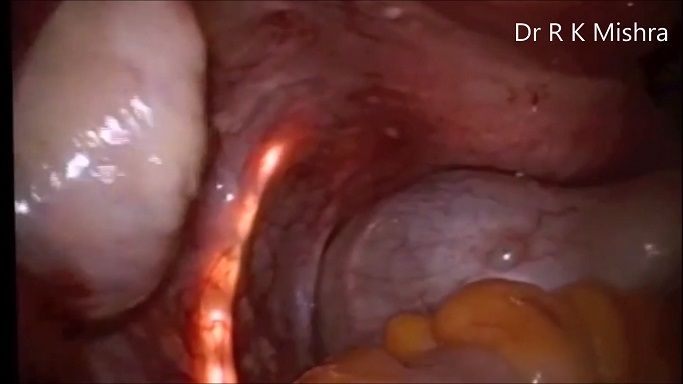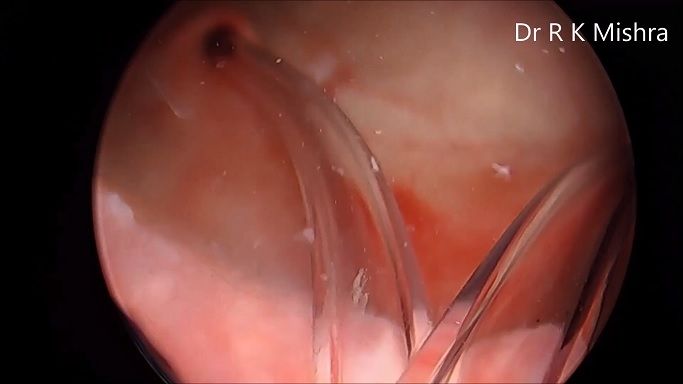Role Of Infrared Ureteral Stent To Aid In Laparoscopic Surgery
ROLE OF INFRARED URETERAL STENT TO AID IN LAPAROSCOPIC SURGERY
IntroductionThere has been a lot of debate about the use of infrared ureteral stent stents in laparoscopic surgery. Ureteral can also be used in the traditional colorectal surgery. In spite, there is a lot of debate about the advantage of this procedure, a convincing conclusion has not yet been reached at. In the recent years, laparoscopic surgery has really grown to even include complex colorectal procedures. The complex procedures are associated with some high degree of risk of damaging the ureter.
A laparoscopic surgery, like laparoscopic colectomy, can cause lactrogenic to the ureter, which is actually a serious complication of the colectomy procedure. In fact, the reported incidence of the ureteral injury during laparoscopic colectomy has always has been ranged from 0.2 to 4.5%. This is what has led to the increased popularity of the use of infrared or lighted ureteral stents in laparoscopic colectomy.

More often than not you will come across the term of the prophylactic lighted ureteral stent (LUS) which still means the same thing as the infrared ureteral stent. The lighted stents basically play a role in improving the vision so that the surgeon can easily identify the ureters in during laparoscopic surgery.
What is known about the use of infrared ureteral stents in laparoscopic surgery?
Several studies have been done to examine the advantages of the use of infrared or lighted ureteral stents in various procedures, including laparoscopic procedures. For instance, a study was conducted on the implications of the use of lighted ureteral stents on laparoscopic colectomy. The study was conducted between April 1996 and January 2000, where a total of 66 patients had infrared ureteral stents placed before laparoscopic colectomy was done. Among the total 66 patients, 32 of them were males and 34 were females. They had an average age of about 62.27 years.
A lot was discovered after the surgery and was reported. The researchers also identified the complications that were related to the use of the lighted ureteral stents. In the results, it was established that in spite of the use of the lighted ureteral stents, one man still suffered an incomplete left ureteral injury during a sigmoid colectomy. However, the injury was managed by use of the conservative approach where the left ureteral stent was reinserted.
Before the introduction of the laparoscopic colectomy, there was the traditional or the open colectomy surgery. The role of the infrared ureteral stents in open colectomy is well documented. It was established that during the open colectomy, the ureteral stents helped allows intraoperative tactile localization of the ureters and also highly helps in the quicker recognition of the ureteral injuries. This was quite useful for the surgeon who is conducting the open colectomy, as it would help reduce the risk of damage to the ureters associated with the open procedure. In addition, the faster or immediate recognition of the injured ureters is also great because it allowed the surgeon to address the problem as a soon as possible. This would greatly help prevent the ureteral injury from becoming a serious complication thus saving the patient money and improving their health.
Laparoscopic colectomy which is an alternative for traditional or open colectomy is a minimally invasive procedure that serves the same purpose as the open procedure through the use of specialized instruments. The use of infrared ureteral stents in laparoscopic colectomy has recently gained popularity. This can be linked to its usefulness in the visual identification of the ureters. However, there are very few details about this subject.
The value of the use of the infrared or lighted ureteral stents in laparoscopic colectomy was studied and several things were discovered. In some instances, there were ureteral injuries during the laparoscopic colectomy that were reported. Also, the injuries were reported in the laparoscopic hysterectomy.

There are four types of ureteral injuries, including laceration, ligation, crush and devascularisation. All these types of injuries can be detected either intraoperatively or post-operatively. When the infrared ureteral stents are placed before laparoscopic surgery they can help in detecting and identification of the ureteral injuries intraoperatively. This, therefore, helped the surgeon to take adequate and immediate action before the problem would become fatal.
In the same study, it was discovered that there was one patient who suffered an incomplete ureteral injury during a sigmoid colectomy. For this to be detected, the diagnosis was done with retrograde cystouretrogram. In fact, the injury was detected on postoperative, two days after the procedure. The injury had some urinary ascites. The ureteral injury together with urinary ascites were managed by the reinsertion of the left ureteral stent temporarily. The temporary lighted ureteral stents were removed on the 11th day after the operation, and the patient discharged. It is evident that use of the lighted ureteral stents in the laparoscopic colectomy led to a decrease in the number of patients with ureteral damage. The significant decrease in the number of patients who suffered ureteral damage shows that the placement of infrared ureteral stents before laparoscopic surgery is done reduced the risk of having the ureter damaged. In fact, in this study, out of the 66 patients, only one suffered ureter damage. In addition, the placement of the lighted ureteral stent helped in the detection of the ureteral damage, which aided in the taking of immediate action to correct the problem. Actually, the problem could be solved postoperatively and even the patient got discharged after postoperative day 11. Therefore, the placement of the lighted ureteral stent does not only help in the detection of damage to the ureter but also it helps in the taking of immediate action to correct the injury.
The use of the ureteral stents is associated with an adverse effect, which is that it leads to postoperative gross haematuria in almost every patient that was in the study. Haematuria is normally known to last for an average of 3 days after the surgery, however, the placement of the bilateral ureteral stents led to a significant increase in the duration of the haematuria. Fortunately, haematuria is not associated with any clinical significance because it does not require a blood transfusion. In order to reduce the haematuria, there is one major thing that the surgeon would adopt, and that is the use of unilateral stents rather than the bilateral stents. The unilateral stents can help to reduce the operative time as well as reduce the postoperative haematuria.
Another adverse effect that was discovered in the study is that the use of lighted ureteral stent led to reflux anuria which is can be serious and even lead to an acute renal failure. Anuria is mostly linked to the result of neurogenic factors that are brought about by the manipulation of the ureter and mediated through the autonomic nervous system.
According to various studies, it was established that anuria that resulted after the placement of the ureteral stents was due to edema that is known to cause mechanical obstruction at the ureterovesical junction. The detection of this symptom is very important in order to take action immediately. Detection or recognition of such symptom would require repeated ureteral stents.
The role of infrared or lighted ureteral stent in laparoscopic colectomy can easily be seen. As it tries to improve vision for the identification of the ureter and thus reducing preventing ureteral damage, the technique aims to make laparoscopic colectomy safe. Without the placement of the lighted ureteral stents, the risk of ureteral injury was high. Ureteral damage can lead to many problems to a patient can also be very expensive to deal with, especially if it is not detected and recognised at an early stage. The best thing about the placement of the ureteral stents is that the surgeon can easily identify whether or not there is any ureteral damage. This allows the doctor to detect the injury early enough before it becomes fatal or difficult to deal with. When it an injury is detected, immediate action is taken to correct the problem either intraoperatively or postoperatively.
The placement of the lighted ureteral stent requires special skills, which can actually be acquired through practice, in order to ensure that the stents are well placed so that it can effectively aid the surgeon during laparoscopic surgery.
Conclusion
The use of Infrared ureteral stents is a safe and cost-effective procedure that can aid in laparoscopic surgery, especially laparoscopic colectomy. The placement of the ureteral stents helps improve the vision, which thus helps avoid intraoperative ureteral injury. The ability to detect any ureteral injury using the procedure facilitates immediate action to be taken. Unilateral stent placement should always be the procedure to use rather than the bilateral procedure. Unilateral stent placement is associated with lower postoperative haematuria and can reduce operative time.




